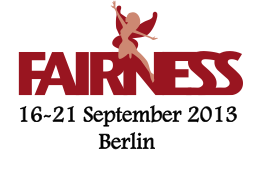Speaker
Mr
Binsong MA
(institut de physique nucleaire d'orsay)
Description
The aim of the PANDA (AntiProton ANnihilation at DArmstadt) experiment at FAIR is to improve our knowledge of the strong interaction and of the structure of hadrons. In particular, the study of electromagnetic processes (pbarp->e+e-, pbarp-> e+e-π0, etc.. ) gives access to the proton structure (electric and magnetic time like form factors, Transition Distribution Amplitudes, Generalized Distribution Amplitudes, etc..). In such channels, the electron and positron signal needs to be separated from the hadronic background which is six orders of magnitude larger than the signal. Excellent particle identification and momentum reconstruction are therefore crucial for such studies.
The PandaRoot software, based on ROOT and Virtual MonteCarlo, is used as the simulation and analysis framework for the future PANDA experiment. A Kalman Filter provides the particle momenta deduced from the central tracker, with GEANE as track follower. This method is not optimally suited for electrons, for which the highly non-Gaussian Bremsstrahlung process yields a tail in the momentum resolution distribution.
A new method was therefore developed to improve the electron momentum reconstruction with an event by event procedure. Indeed, a considerable fraction of the Bremsstrahlung photons can be detected in the Electromagnetic Calorimeter and their energy is deduced from a dedicated analysis of the distribution of energy deposited in the crystals. This new analysis takes advantage of two facts: the photons are emitted along the electron direction and the Bremsstrahlung process takes place in the Micro Vertex Detector area which is located close to the target. This allows isolating the area where the photons can be detected.
We will show that the inclusion of the Bremsstrahlung photons considerably improves the resolution of the electron momentum, which results in a gain in the signal selection efficiency for the measurement of electromagnetic processes. The effect of the method on the radiative correction calculation will also be presented.
Primary author
Mr
Binsong MA
(institut de physique nucleaire d'orsay)

